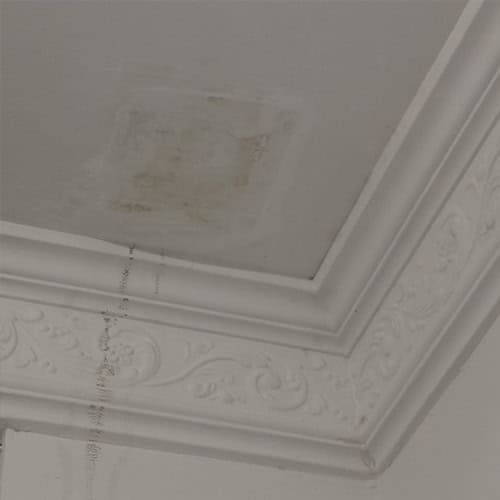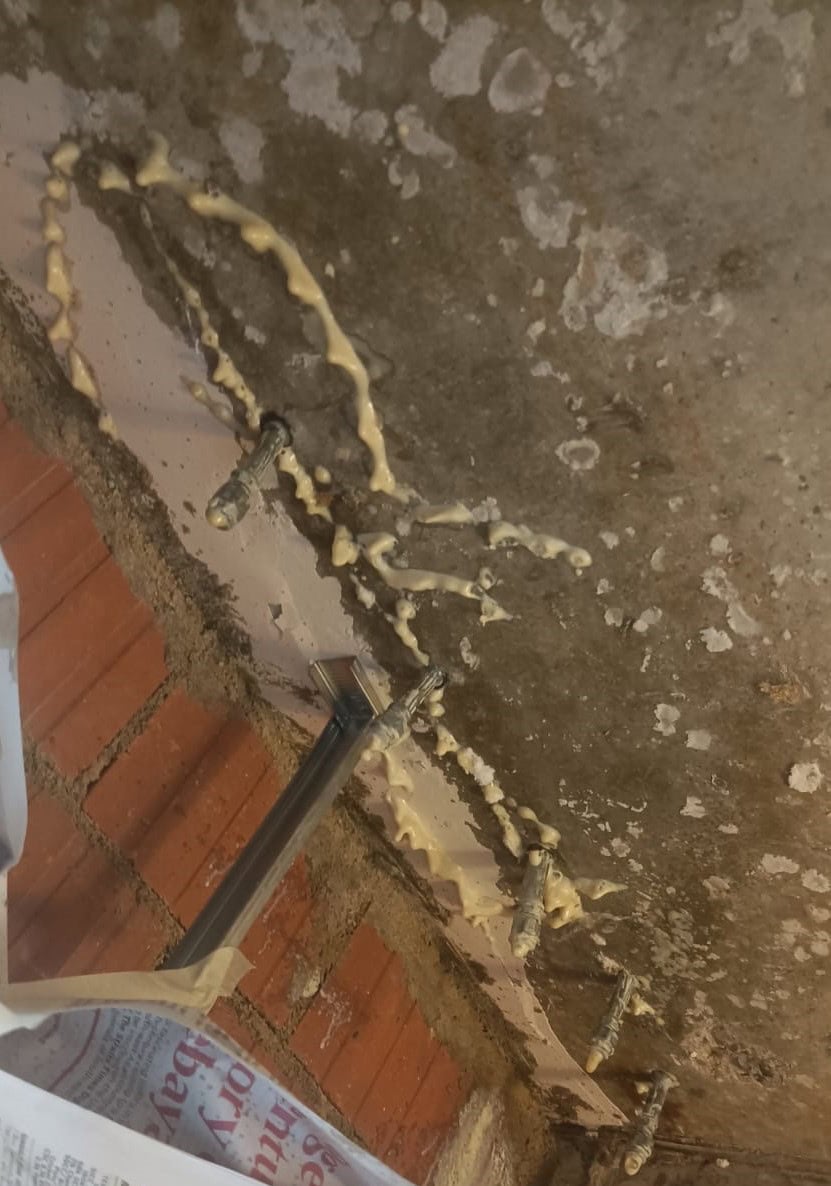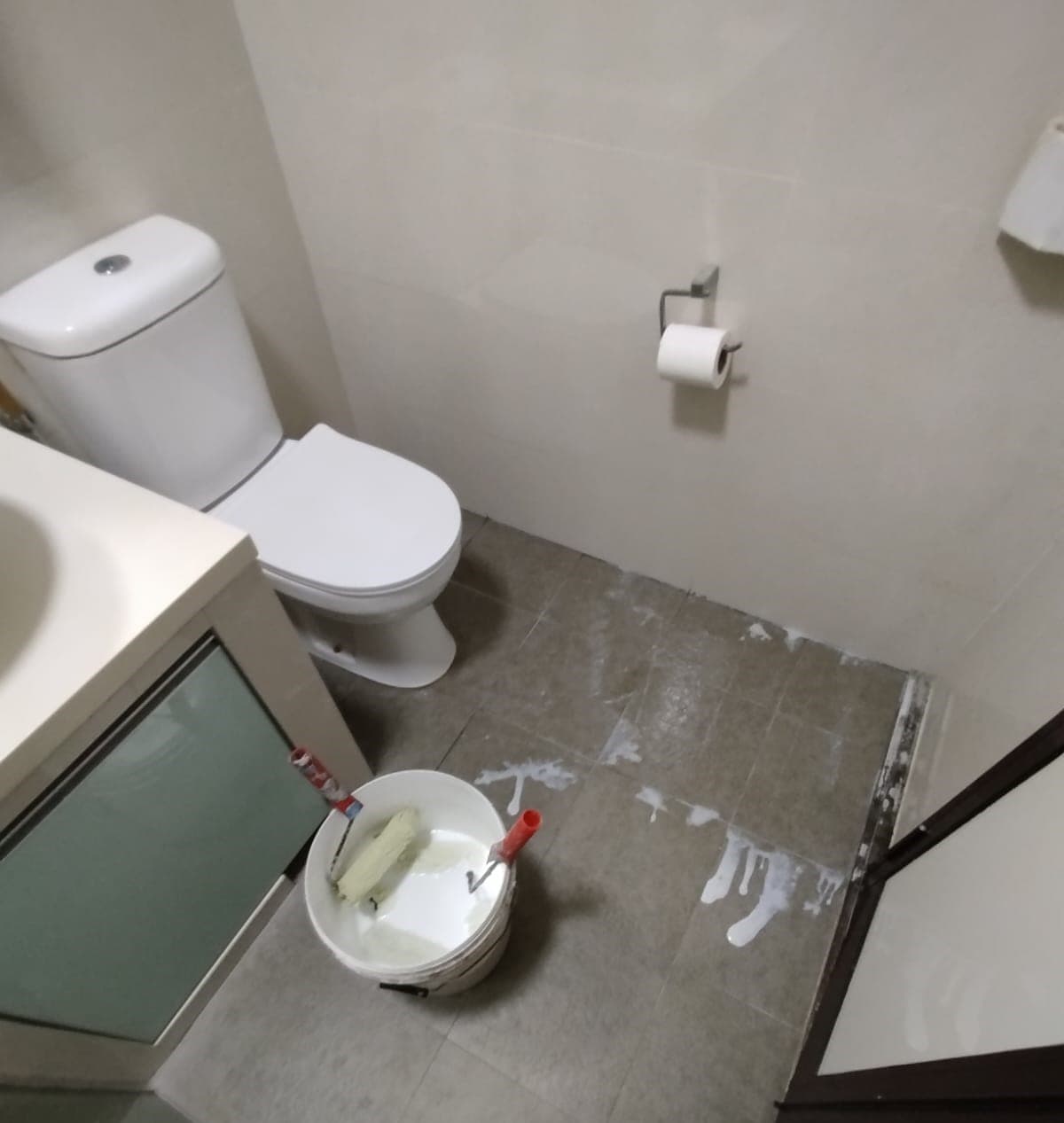A ceiling leak is one of the most frustrating and potentially damaging issues a homeowner can face. When water starts dripping from your ceiling, it creates an unsightly mess and could lead to more severe problems such as structural damage, mold growth, and expensive repair bills.
Understanding why your ceiling leaks and addressing the issue is crucial for maintaining the integrity of your home.
Whether the leak is due to a compromised roof, faulty plumbing, or condensation, taking immediate action and seeking the help of a professional waterproofing contractor can save you time, money, and stress in the long run. You can protect your ceiling from future leaks and ensure your home remains safe and dry.
When it comes to ceiling leaks, prevention, and timely intervention are key to avoiding costly repairs and preserving the value of your property.
What to Do When Water Is Leaking from the Ceiling?
When you notice water leaking from your ceiling, it is essential to act quickly to minimize damage. The first step is to contain the leak by placing a bucket or any container under the dripping water to prevent it from spreading and avoid further ceiling board damage.
Turn off the water supply if the leak seems to be coming from plumbing pipes. If you suspect a roof leak, try to cover the roof temporarily with a tarp to prevent more water from entering your home.
Contact a ceiling waterproofing specialist or a reputable waterproofing contractor in Singapore. They will help assess the damage, identify the leak’s source, and provide a ceiling leak solution that addresses the root cause, ensuring that the problem doesn’t recur.
What Is the Most Common Cause of Ceiling Leaks?
The most common cause of ceiling leaks is water seepage from a compromised roof. Roofs are designed to protect your home from the elements, but over time, they can deteriorate due to exposure to harsh weather conditions, poor maintenance, or installation issues. When a roof develops cracks, broken shingles, or gaps in flashing, water can easily penetrate and make its way into your ceiling.
Another frequent cause of ceiling leaks is plumbing issues. Leaky pipes, especially those running through the ceiling or within walls, can cause water to accumulate and eventually seep through the ceiling. Clogged gutters and downspouts can cause water to overflow and seep into the roof structure, leading to ceiling leakage.
In some cases, ceiling leaks are caused by condensation. This usually happens in areas with poor insulation or ventilation, such as attics or crawl spaces, where warm, moist air meets cooler surfaces, leading to water droplets forming and dripping onto the ceiling.
Types of Ceiling Leaks
Understanding the types of ceiling leaks can help you identify the underlying issue more accurately and seek the appropriate ceiling leak solution.
Interfloor Leakage:
Interfloor leakage is a prevalent issue in Singapore homes, especially in high-rise buildings such as HDB flats and condominiums. This type of leakage occurs when water seeps from an upper floor down to the lower floor, usually manifesting as water damage on the ceiling. The problem can cause significant damage to both the structure and the interior finishes of a home if left unchecked.
There are several common causes of interfloor leakage. Plumbing issues are a primary culprit, where leaking or burst pipes within the ceiling or walls allow water to escape and seep into the lower levels.
Another frequent cause is poor waterproofing, particularly in wet areas like bathrooms and kitchens, which can result in water penetrating through the floors. Over time, the wear and tear of building materials can also lead to interfloor leakage.
Aging waterproof membranes, which are often installed in bathrooms, kitchens, or balconies, may deteriorate, allowing water to pass through.
Structural defects, such as poor construction practices or the use of substandard materials, can further exacerbate the problem.
Additionally, as buildings settle, small cracks may form, providing a pathway for water infiltration. Inadequate waterproofing during the initial construction phase or failure to maintain or replace waterproofing layers as they age are also significant contributors to this issue.
Signs of Interfloor leakages
- Visible Water Stains: Yellowish or brown stains on the ceiling, often accompanied by dampness.
- Peeling Paint or Wallpaper: Moisture causes paint or wallpaper to blister, peel, or discolor.
- Mold or Mildew: Damp conditions foster mold growth, which appears as black or green spots.
- Dripping Water: In severe cases, water may actively drip from the ceiling.
- Warped or Bubbling Ceiling: Prolonged exposure to moisture can cause the ceiling to deform or bubble.
Consequences of Ignoring Interfloor Leakage
Ignoring interfloor leakage can lead to severe consequences. Structural damage is one of the most serious outcomes, as prolonged water exposure can weaken the ceiling and floor’s integrity, potentially leading to more severe issues such as ceiling collapse. Health risks are another concern, particularly from mold and mildew growth, which can cause respiratory problems and other health issues for the inhabitants. Financially, delaying repairs can be costly, as the damage can escalate, leading to higher repair expenses. In communal living settings like condos or HDBs, interfloor leakage can also lead to disputes with neighbors if the problem affects multiple units, adding a legal or social dimension to the issue.
Repair and Prevention Methods
Repairing and preventing interfloor leakage requires a systematic approach. The first step is to accurately identify the source of the leakage, which may not always be immediately apparent. Engaging a professional is often necessary to diagnose the issue correctly. Once the source is identified, it’s essential to repair any damaged pipes that may be contributing to the water seepage. Reinforcing waterproofing is another critical step, particularly in areas prone to water exposure such as bathrooms, kitchens, and balconies. Applying new waterproof membranes can help prevent future leaks, and for cracks or gaps in concrete, PU injection grouting can be an effective solution.
Regular maintenance is vital in preventing interfloor leakage. Conducting periodic inspections ensures that waterproofing measures remain intact, and addressing minor issues promptly can prevent them from escalating into more significant problems. When interfloor leakage does occur, it’s advisable to engage a licensed waterproofing contractor who can carry out the necessary repairs and apply new waterproofing solutions effectively.
In Singapore, there are legal and regulatory considerations to keep in mind when dealing with interfloor leakage. In HDB flats, interfloor leakage is a common issue, and the responsibility for repairs can sometimes be shared between the upper and lower unit owners. The Housing & Development Board (HDB) provides guidelines on resolving such issues, often requiring joint investigations and cost-sharing for repairs. In condominiums, similar protocols exist, but the management corporation may play a more significant role in coordinating and overseeing repairs.
1. Roof Leaks:
These occur when the roof’s integrity is compromised, allowing rainwater to seep through and cause ceiling water damage. Roof leaks are often characterized by water stains on the ceiling or walls and are more common during or after heavy rain.
2. Plumbing Leaks:
These leaks result from faulty or damaged pipes running through your ceiling. Signs of plumbing leaks include persistent water stains, mold growth, and dripping water even during dry weather. These leaks often require immediate attention as they can lead to extensive water damage.
What Should I Do if My Bathroom Ceiling Is Leaking?
A leaking bathroom ceiling can be particularly problematic, as it often indicates a more serious issue such as plumbing failures or water seepage from a neighboring unit. The first step is to determine whether the leak is due to a plumbing issue within your bathroom or if it’s coming from an external source, such as the roof or an upstairs neighbor’s bathroom.
If the leak is minor, you can temporarily stop it by placing a bucket under the drip and turning off the water supply to the affected area. However, a bathroom ceiling leak usually requires immediate professional attention due to the high risk of mold growth and extensive water damage.
Contact a waterproofing contractor who specializes in ceiling waterproofing repair to inspect the leak and suggest the most appropriate repair method. Depending on the severity of the leak, they might recommend PU injection grouting, which seals cracks and prevents water from seeping through the ceiling.
What Is the solution for Ceiling Leak?
The solution to a ceiling leak depends on the cause and severity of the leak. Here’s a breakdown of common ceiling leak solutions:
1. PU Injection Grouting:
PU injection grouting is a popular method for sealing cracks and preventing water from seeping through ceilings. This technique involves injecting a polyurethane resin into cracks, which then expands to fill and seal the gaps. It’s a long-lasting solution that’s effective for both small and large leaks.
Polyurethane (PU) injection grouting is a specialized waterproofing technique commonly used by contractors to repair cracks, voids, and leaks in concrete structures, such as walls, floors, and foundations. The process begins with a thorough assessment of the structure to pinpoint problem areas, followed by the preparation of the polyurethane resin, which is mixed to activate its foaming and expansion properties. This resin is then injected into the damaged areas under controlled pressure, allowing it to expand and create a durable, watertight seal. The resin quickly cures, forming an impermeable barrier against water infiltration. After curing, any excess material is removed, and the repaired areas are inspected for quality. PU injection grouting is valued for its quick curing time, flexibility, strong adhesion, and resistance to water and chemicals, making it a cost-effective and efficient solution for waterproofing concrete structures without extensive disruption.
2. Waterproofing Membrane:
Installing a waterproofing membrane on your ceiling is another effective solution. This membrane acts as a barrier, preventing water from penetrating the ceiling. It’s particularly useful in areas prone to water exposure, such as bathrooms and kitchens.
Cementitious membranes are commonly used in internal wet areas such as bathrooms due to their ease of application and compatibility with concrete surfaces.
Bituminous membranes, composed of asphalt with reinforcing layers, are suitable for flat roofs and foundations, offering durability and resistance to water and UV rays.
The benefits of waterproofing membranes include preventing water damage, extending the building’s lifespan, reducing maintenance costs, and enhancing indoor comfort. Proper installation, including surface preparation and application under suitable conditions, is crucial for their effectiveness. Professional installation is often recommended to ensure optimal performance and longevity of the waterproofing system.
Who Is Responsible for a Ceiling Leak in the Bathroom?
Determining responsibility for a ceiling leak in a bathroom can be tricky, especially in multi-unit buildings like condominiums or HDB flats. The responsibility often depends on the source of the leak and the building’s maintenance policies.
1. Homeowner Responsibility:
If the leak is caused by plumbing issues or water seepage from your bathroom, you are typically responsible for repairing the leak and any resulting damage. This includes hiring a waterproofing contractor to fix the ceiling and prevent future leaks.
2. Landlord Responsibility:
If you’re renting, the landlord is usually responsible for maintaining the property’s structural integrity, including the roof and plumbing. If the leak is due to a failure in these areas, it’s the landlord’s responsibility to fix it.
3. Condo Management Responsibility:
In condominiums, the management or homeowner’s association may be responsible for repairing leaks caused by common areas, such as the roof or exterior walls. However, if the leak originates from within your unit, you might be responsible for the repairs.
4. Neighbor Responsibility:
In cases where the leak is caused by a neighbor’s plumbing, such as a leak from an upstairs bathroom, the neighbor may be responsible for fixing the issue and covering any repair costs.
5. HDB Responsibility:
In HDB flats, ceiling leaks caused by external factors, such as roof leaks, are usually the responsibility of the HDB. However, internal leaks due to faulty plumbing within your unit are typically your responsibility. In any case, it’s essential to communicate with the relevant parties and seek professional advice to resolve the issue promptly and fairly.
For complex seepage issues, it’s wise to hire licensed waterproofing contractors or specialists. We can conduct thorough inspections, recommend personalized solutions, and apply professional techniques like membrane installation, injection grouting, and leak sealing to address wall and ceiling seepage problems. Choosing a reputable waterproofing contractor is essential for ensuring effective and high-quality waterproofing work.
SWC Construction excels in waterproofing with over 20 years of experience and advanced Polyurethane (PU) injection grouting technology. We cater to industrial, commercial, and residential properties, and our positive Google reviews highlight our dedication to quality service.
Contact us for a detailed on-site inspection and customized recommendations for your waterproofing or roof leakage concerns.





